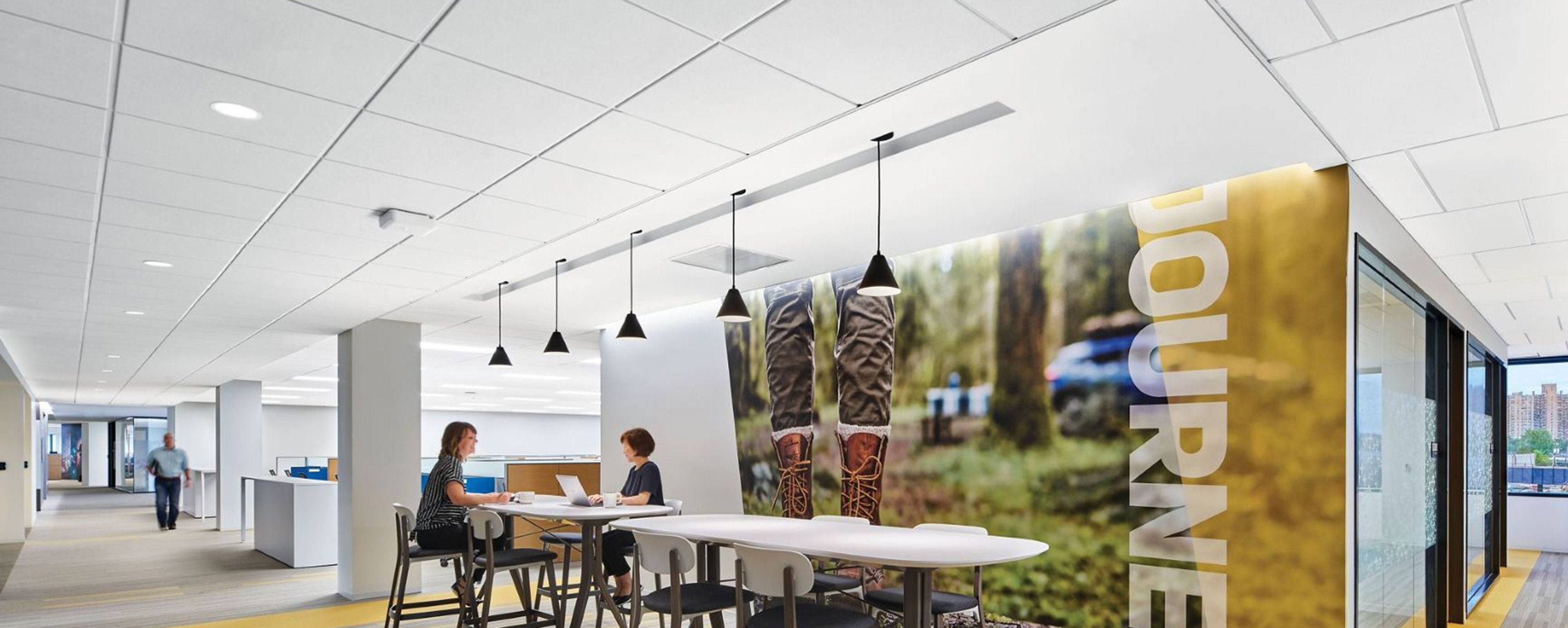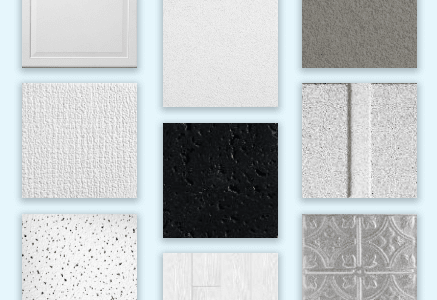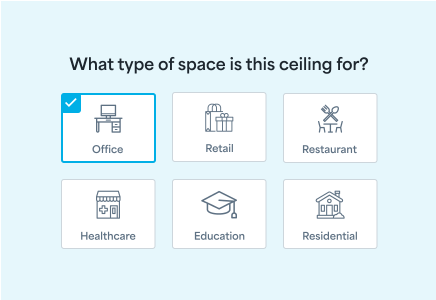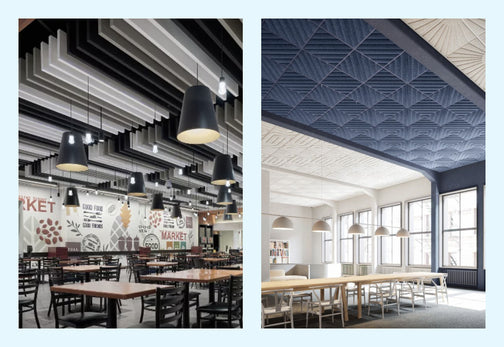Different types of ceilings | Styles and Materials

When deciding on the different types of ceilings that work for your home or business, there are styles (drop ceiling, surface mount) and materials (mineral fiber, fiberglass, wood, metal) to consider. Each style and material has their own advantages and benefits that should be researched before installing.
What are the different types of ceilings?
Common ceiling types include:
-
Conventional (Flat) Ceilings
-
Tray Ceilings
-
Coffered Ceilings
-
Cathedral/Vaulted Ceilings
-
Suspended (Drop) Ceilings
-
Beam Ceilings
-
Coved Ceilings
-
Barrel Vault Ceilings
-
Exposed Ceilings
-
Tin or Metal Ceilings Each type offers unique aesthetic and functional advantages depending on the space.
Conventional ceiling
A conventional ceiling is flat and typically 8 to 9 feet high. It’s the most common and cost-effective type of ceiling used in homes and offices.
Tray ceiling
A tray ceiling features a central section that is higher than the surrounding area, creating a layered or "inverted" look. It adds depth and visual interest, often used in dining rooms, bedrooms, and foyers.
Coffered ceiling
A coffered ceiling has a grid of recessed panels (usually square or rectangular), often with decorative beams. It brings elegance and architectural depth to formal living spaces or offices.
Vaulted or cathedral ceiling
These ceilings angle upwards towards a peak, often following the roofline. Vaulted ceilings create an open, spacious feeling and are commonly found in living rooms, great rooms, and entryways.
Drop ceiling or suspended ceiling
A drop ceiling is a secondary ceiling hung below the structural ceiling using a metal grid and tiles. It's used in basements, commercial buildings, or spaces requiring access to pipes, wires, or ductwork.
Beam ceiling
A beam ceiling features exposed or decorative beams. These can be structural or purely aesthetic, often adding a rustic, industrial, or farmhouse vibe to a space.
Coved ceiling
A coved ceiling features a curved transition between the wall and ceiling, creating a soft, elegant look. It’s often seen in traditional or classical-style homes.
Barrel vault ceiling
A barrel ceiling is a curved ceiling that resembles a barrel cut in half lengthwise. It adds drama and grandeur and is often used in hallways or large entry spaces.
Tin ceilings
Tin ceilings are decorative metal panels used primarily for aesthetic appeal. They're popular in vintage, industrial, or restored historical interiors.
How do I choose the best ceiling type for my space?
Consider:
-
Room height & size
-
Style & architecture of the home
-
Desired aesthetics
-
Functionality (acoustics, insulation, lighting)
-
Budget & maintenance
Installation methods and styles
Drop ceiling
This installation method is most commonly used in commercial businesses, medical facilities, and home basements. Drop ceilings allow easy access to pipes, ducts, and wiring and require less clean-up after installation. These projects can be done as a complete ceiling refresh or you can utilize our patch and match program, to replace a few damaged or old tiles.
Drop ceilings can look very different, depending on the style you choose. Some of the different looks are:

Surface mount ceilings
These are also known as “Direct Apply” ceilings. This method maximizes overhead space, helps cover up imperfections in drywall or old popcorn ceilings, and can provide an alternative to an all white ceiling. Our WOODHAVEN product line is a commonly used style for this method.
Exposed ceiling
This style of ceiling leaves the structural and mechanical systems exposed, creating an industrial aesthetic. Because of all of the open space and hard surfaces, though, noise problems will arise. Take a look at sound absorbing, direct apply panels like INVISACOUSTICS, shown below.
Ceiling Materials
Mineral Fiber Ceiling
Our most popular type of ceiling. This material offers acoustic benefits, reducing noise by up to 95%, and has superior mold and sag resistance in some tiles. 
Fiberglass Ceiling
These tiles are lightweight, easy-to-clean and install, and offer a variety of noise reduction and moisture resistant properties.
TECTUM Wood Fiber Ceiling
TECTUM ceiling panels are highly sustainable and durable, providing noise control for many different spaces like pools and gyms.
Metal Ceiling
Get the combination of performance (washable, scrubbable, impact- and soil- resistant) and looks (smooth and sleek design) with metal ceiling panels.
Wood-look MDF Ceiling
For residential use only, wood-look ceiling planks are a stylish and super popular product for homes and some finishes can even be used on walls.
No matter what style or material you decide, Kanopi by Armstrong has the right ceiling for you.
Questions, contact us! You can also follow us on Facebook, Instagram, and LinkedIn.
FAQ's
Which ceiling type is best?
The best ceiling type depends on a lot of different aspects of the space. There are different performance attributes that a ceiling might need, different textures that are important to a room, or a multitude of different elements.
How do you install ceiling tiles?
For most DIY-ers installing a drop ceiling is something that can be done quickly. Some of our products require better technical skills, more time planning and measuring, and more tools, like metal shears. Be sure to read our how-to install drop ceiling guide.
-
Posted in
ceiling materials, ceiling styles, drop ceiling, surface mount





 Thanks for subscribing!
Thanks for subscribing!

